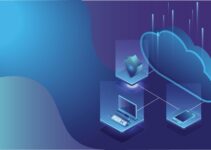The shift to remote work has revolutionized the business world, offering unprecedented flexibility and new opportunities for organizations and employees alike. However, this transformation has also brought forward significant security challenges. As businesses adapt to this new landscape, securing remote workforces has become a paramount concern.
Understanding the Remote Work Environment
Remote work environments differ fundamentally from traditional office settings. Employees often use personal devices and unsecured networks, increasing their vulnerability to cyber-attacks. The lack of direct oversight and the diverse locations of employees contribute to the complexity of securing remote work.
The Role of Technology in Remote Work Security

Source: forbes.com
Technology plays a crucial role in securing remote workforces. The use of Virtual Private Networks (VPNs), secure cloud services, and robust anti-malware software are essential in creating a safe remote working environment. Regular updates and patches are crucial to protect against the latest threats.
Importance of Secure Collaboration Tools
In remote work environments, collaboration tools are essential for communication and teamwork. However, these tools can also pose security risks if not properly managed. Ensuring that all communication channels are encrypted and that file-sharing systems are secure is crucial. Organizations should opt for collaboration tools that offer high levels of security and comply with data protection standards.
Implementing Strong Authentication Methods
Strong authentication methods are vital for remote work security. Multi-factor authentication (MFA), which requires more than one method of verification, significantly reduces the risk of unauthorized access. Biometric authentication and one-time passcodes are effective ways to enhance security.
Enhancing Network Security for Remote Teams
Network security is a cornerstone in safeguarding remote workforces. Implementing firewalls and Intrusion Detection Systems (IDS) can significantly bolster the network’s defenses. These systems monitor network traffic for suspicious activities and potential threats, providing an additional layer of security. Additionally, deploying Secure Web Gateways (SWG) can prevent access to malicious websites, reducing the risk of malware infections.
The Concept of Zero Trust in Remote Work Security
Central to modern cybersecurity strategies is the concept of “zero trust.” This security model assumes that threats exist both outside and inside the network. Therefore, it requires strict identity verification for every person and device trying to access resources on a private network, regardless of whether they are within or outside of the network’s perimeter.
Regular Training and Awareness Programs

Source: timedoctor.com
Human error remains a significant security risk. Regular training and awareness programs are crucial in educating employees about the latest phishing schemes, social engineering tactics, and safe internet practices. A well-informed workforce is a crucial line of defense against cyber threats.
Data Protection and Privacy
Protecting sensitive data in a remote work setting involves encryption, secure file-sharing platforms, and strict access controls. Data loss prevention (DLP) tools can monitor and control data transfer, ensuring sensitive information doesn’t fall into the wrong hands.
Emergency Response and Incident Management
An effective incident response plan is essential. This plan should include protocols for identifying, responding to, and recovering from security breaches. Rapid response can mitigate the damage caused by cyber incidents and prevent future attacks.
Regular Audits and Compliance
Conducting regular security audits helps identify vulnerabilities in the remote work setup. Compliance with international standards and regulations, such as GDPR and HIPAA, is also critical to ensure that the organization’s remote work policies adhere to legal requirements.
Role of Endpoint Management in Remote Security

Source: forbes.com
Endpoint management is critical in securing the devices used by remote employees. This involves ensuring that all devices accessing company data are securely configured, managed, and monitored. Employing Mobile Device Management (MDM) and Endpoint Detection and Response (EDR) solutions helps in maintaining control over these devices, detecting potential threats, and responding to security incidents more effectively.
Advanced Threat Protection and Analytics
Investing in advanced threat protection systems and analytics tools is vital in identifying and mitigating sophisticated cyber threats. These tools use artificial intelligence and machine learning to analyze patterns, detect anomalies, and predict potential security breaches. By leveraging these technologies, organizations can proactively address threats before they escalate into major security incidents.
Cyber Insurance as a Risk Management Tool
In an age where cyber threats are increasingly sophisticated, cyber insurance emerges as a critical risk management tool for remote workforces. This insurance helps mitigate the financial risks associated with data breaches, network damage, and other cyber incidents. It often covers costs related to recovery, legal fees, and compensations. By integrating cyber insurance into their security strategy, organizations not only prepare for the potential financial repercussions of cyber attacks but also demonstrate a commitment to comprehensive risk management, which can be reassuring to clients and partners in an increasingly interconnected digital world.
Securing remote workforces demands a comprehensive approach, combining technological solutions, employee education, and robust policies. In the evolving landscape of remote work, organizations must stay vigilant and adaptable to protect their assets and maintain the trust of their employees and customers.



